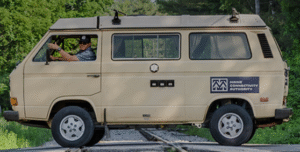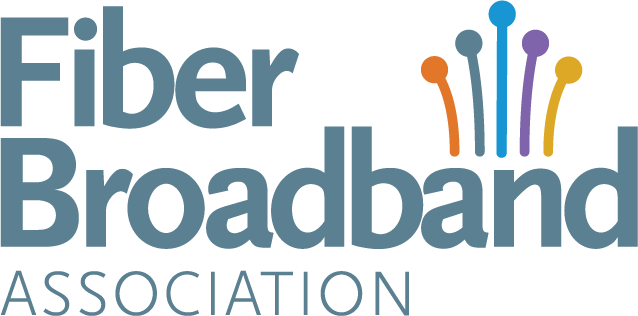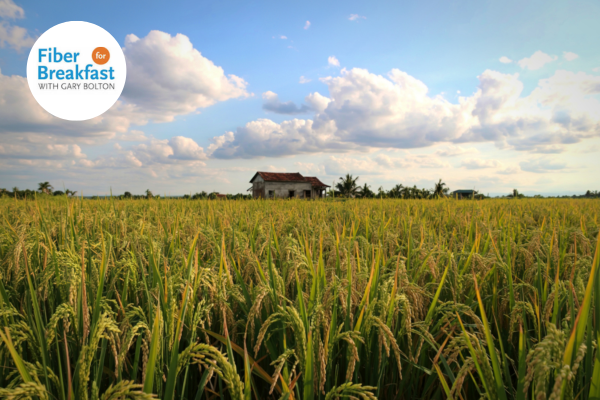FFB Week 32: Driving Connections: Local Lessons from the Road to Broadband Expansion
Driving Connections: Local Lessons from the Road to Broadband Expansion
Broadband is no longer a luxury – it’s essential for economic opportunity, education, and community resilience. The Maine Connectivity Authority (MCA) is meeting this need by investing in infrastructure through a deeply local, collaborative approach.
In this episode of Fiber for Breakfast, Andrew Butcher, President of the MCA talks with Gary Bolton, President & CEO of the Fiber Broadband Association (FBA) and shares stories from the road and insights into how strategic partnerships with Tribal, municipal, nonprofit, and private stakeholders are helping close the digital divide in Maine.
 In June 2025, a 900-mile journey across Maine in a 1984 Westfalia VW van affectionately named “Buttercup” offered more than scenic views—it offered a deep dive into the human side of digital connectivity. The tour, designed to engage local communities and observe broadband projects firsthand, highlighted a unique hypothesis: the more digitally connected we become, the more isolated we may feel as humans. Yet, the conversations, encounters, and collaborations revealed that connectivity, when paired with human engagement, is a powerful enabler of community and opportunity.
In June 2025, a 900-mile journey across Maine in a 1984 Westfalia VW van affectionately named “Buttercup” offered more than scenic views—it offered a deep dive into the human side of digital connectivity. The tour, designed to engage local communities and observe broadband projects firsthand, highlighted a unique hypothesis: the more digitally connected we become, the more isolated we may feel as humans. Yet, the conversations, encounters, and collaborations revealed that connectivity, when paired with human engagement, is a powerful enabler of community and opportunity.
Buttercup, with its retro charm, proved an unexpected bridge to conversation. From grizzled Harley riders to festival-goers, people were drawn to share their stories, dreams, and experiences. The van became a metaphor for connectivity itself—a way to bring people together in a state defined by vast distances, rugged terrain, and one of the highest concentrations of rural and aging populations in the United States. The journey showcased Maine’s broad and growing connectivity landscape. A statewide map of the tour highlighted a range of infrastructure initiatives, including the “MooseNet” open optical network, a middle-mile initiative supported through competitive grants in partnership with the NTIA, the Maine Department of Transportation, and the University of Maine. These projects reflect not only technical progress but also the strategic approach required to serve communities spread across 30,000 square miles of mountains, coastlines, and granite-laden soil.
Western Maine offered the first set of illustrative stories. In Bethel, a small town in Oxford County, local leaders spearheaded a multi-town public-private partnership to consolidate broadband services across municipal offices. By aggregating demand, the community negotiated competitive internet contracts, leveraging regional funding initiatives and support from the MCA. This model demonstrates how rural communities can align resources, maximize investment, and drive digital equity through collaboration.
Beyond infrastructure, human engagement emerged as a core component of connectivity. Individuals like Jim Whitman—a school bus driver and local technical expert in Bethel—embody the crucial role of “digital navigators.” They help residents access technology, learn new skills, and fully utilize broadband investments. Similarly, in northern Maine’s Aroostook County, digital navigators like Crystal Tilly provide technical support across vast rural areas, reinforcing the connection between infrastructure deployment and practical, everyday use. According to Butcher “She’s able to do that because she’s coordinating directly with a regional partner who is responsible for helping support communities, not just in their broadband planning, but in their assessment of technical needs at a community level.”
The tour also highlighted Tribal connectivity efforts, where leaders like Fred Corey of the Mi’kmaq Nation address not only current broadband needs but also future applications, including remote healthcare and network aggregation. These stories reflect a broader lesson: successful connectivity initiatives require both robust infrastructure and sustained, locally embedded human support.
Eastern Maine, particularly Washington County, underscored the importance of multi-town collaboration in historically underserved areas. Residents like Janice, a retired teacher and veteran, shared how local libraries and digital literacy programs help them adapt to new technologies and remain engaged with their communities. Butcher reiterated Janice’s quote which said “I spent 35 years as a school teacher. I’m a mother, I’m a veteran. I learned to thrive in one stream of life, and I’m now forced into another stream through technology, and I feel like I’m swimming in brackish water, and I fear I would drown, if not for the shared experience, to learn new technology skills with new friends at my local library, and to be able to understand how I can communicate to my children and thrive in their environment.” Her story encapsulates the human impact of connectivity—providing not just access but confidence and community engagement.
Across the state, Butcher explained that “Maine has facilitated $250 million in public and private investment, reducing underserved broadband populations from 18% to approximately 4%.” Alternative technologies complement fiber-to-the-premise deployments, and initiatives like the Maine School and Library Network serve as models for national digital equity efforts. The state’s investments also anticipate future needs, including AI data centers and distributed research networks, emphasizing the importance of scalable infrastructure for both urban and rural communities.
The Driving Connections Tour revealed a key insight for the telecommunications industry: broadband is not simply about technology—it’s about enabling human connections, educational opportunities, economic development, and equity. As Maine continues to
expand its digital landscape, partnerships between public agencies, local communities, Tribal leaders and private providers remain essential. From fisheries in Lincoln County to county jails, libraries, and Tribal lands, the state’s comprehensive approach demonstrates how connectivity can empower communities and build resilience in the most rural corners of America.
Ultimately, the tour affirmed a hopeful reality: while digital connectivity introduces new challenges, it also fosters unprecedented human connection, collaboration, and opportunity. Maine’s example serves as a blueprint for other regions striving to balance technology deployment with the human touch, showing that in even the most remote areas, broadband is both a bridge and a lifeline.
Click here to listen to the full episode or find previous episodes of Fiber for Breakfast.




